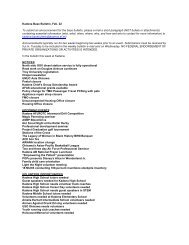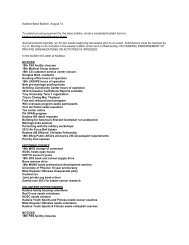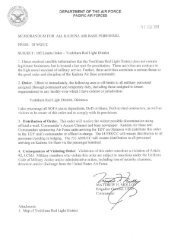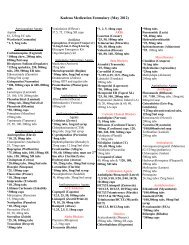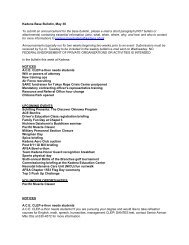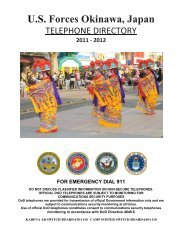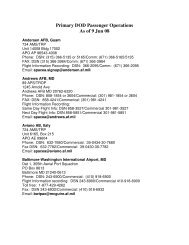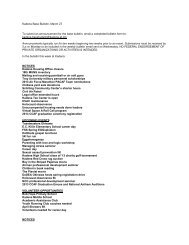JP 3-52, Joint Airspace Control - Defense Technical Information ...
JP 3-52, Joint Airspace Control - Defense Technical Information ...
JP 3-52, Joint Airspace Control - Defense Technical Information ...
You also want an ePaper? Increase the reach of your titles
YUMPU automatically turns print PDFs into web optimized ePapers that Google loves.
Organization and Coordinationidentification and engagement procedures and ROE appropriate to the nature of thethreat. These instructions should also consider the volume of friendly air traffic, friendlyair defense requirements, IFF technology, weather, and adversary capabilities.Instructions are contained in the SPINS and in the ACO, and are updated as frequently asrequired. The ATO, ACO, and SPINS provide operational and tactical direction atappropriate levels of detail.c. The ATO is the OPORD or mission assignment for all aircraft missions flownunder the control of the JFACC in the operational area and shows all missionsoperating in the operational area during the effective time period. Other air missionsnot under the control of the JFACC may be added to the ATO to provide visibility foroverall coordination and deconfliction. A timely ATO is critical — joint forcecomponents conduct their planning and operations based on a timely, executable ATOand are dependent on its information.d. In some theaters, numerous airspace procedures and airspace usages are publishedin the SPINS. The SPINS include a section on airspace procedures. Other SPINSsections will include tanker procedures, cruise missile procedures, etc., as required. TheSPINS may include ROE and combat identification criteria for air defense along with anyadditional guidance/directives/information for weapons system operators and/or aircrewssuch as HN restrictions, BDZ procedures, and special weapons systems controlprocedures. SPINS are published as baseline SPINS, weekly SPINS, and daily SPINS.For further discussion of the joint air tasking cycle see <strong>JP</strong> 3-30, Command and <strong>Control</strong>for <strong>Joint</strong> Air Operations.8. Communications and Security Considerationsa. ACSs should be joint, interoperable, survivable, sustainable, and redundant.The ACS should be jam-resistant with secure C2 networks. The ACS should allow usersto maintain situational awareness and effectively respond to evolving enemy situationand friendly air operations. Timely integration of sensor data; intelligence, surveillance,and reconnaissance (ISR) information; aircraft, ground, maritime, and special operationsforces (SOF); and networked inputs between authorized airspace control agencies and C2nodes to develop a common operational picture (COP) provides crucial situationalawareness for airspace agencies, users, and decisionmakers.b. The purpose of security is to never permit the enemy to acquire an unexpectedadvantage. Secure ACSs including sensors, communications, data processing, andcommon operating databases are crucial to effective airspace control capabilities.<strong>Information</strong> assurance (IA) programs such as communications security, physical security,emissions security, and network defense are methods to protect ACSs and information.Due to the US military’s dependency on and the general vulnerability of electronicinformation and its supporting systems, IA is essential to airspace control.Considerations for operations security (OPSEC) must be applied when developingcommunication policies and procedures.II-7



